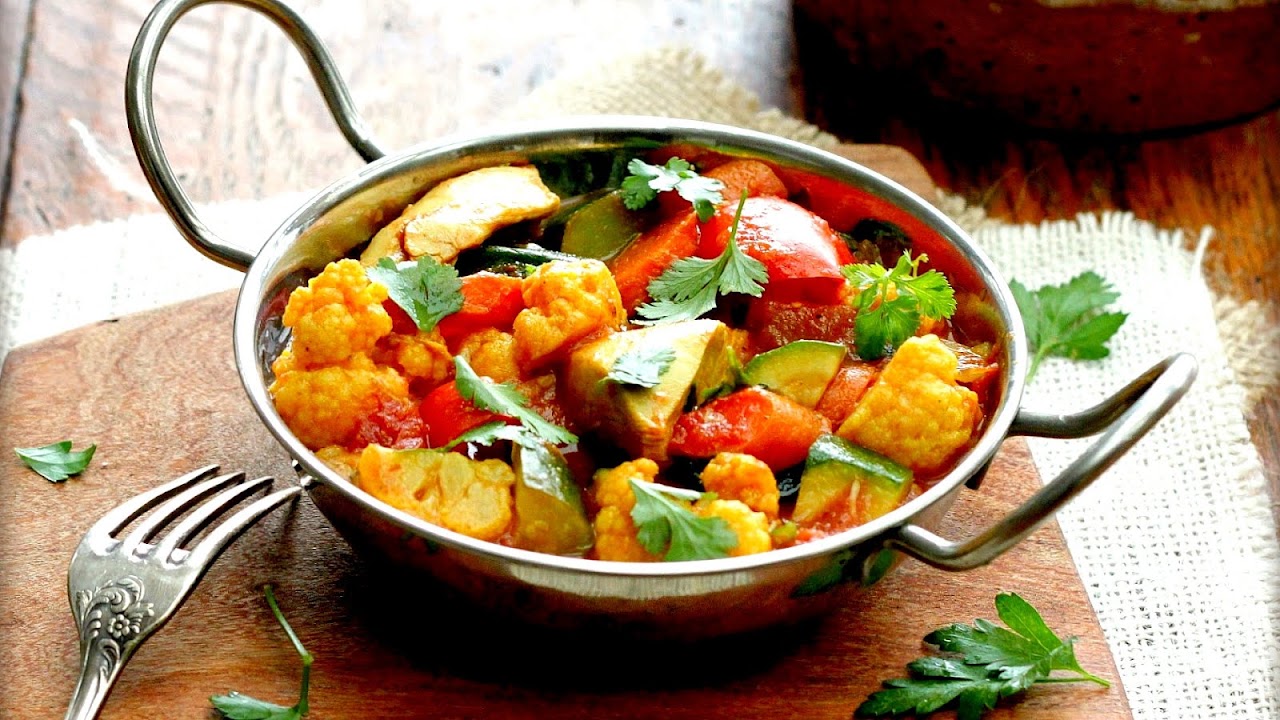
Curry puff (Malay: Karipap, Epok-epok; Chinese: ???,???; pinyin: g?lí ji?o; Thai: ??????????, RTGS: karipap, pronounced [k?.rì:.páp]) is a snack of Southeast Asian origin. It is a small pie consisting of curry with chicken and potatoes in a deep-fried or baked pastry shell. The curry is quite thick to prevent it from oozing out of the snack.
A common snack in Singapore, the curry puff is one of several "puff" type pastries with different fillings, though now it is by far the most common. Other common varieties include sardines and onions or sweet fillings such as yam.
Though differing in the type of pastry used, the shape and structure of the curry puff may suggest that it has its origins in the Cornish pasty.
Curry puffs are a very popular snack item in Indian bakeries. Several variations of it are available based on its content, including egg puff, potato puff, chicken puff, veggie puff and Paneer puff. Curry puffs are enjoyed throughout Brunei, Malaysia, Indonesia, Singapore, Thailand, and India. It also shares many similarities with the empanada, a popular pastry in Spanish- and Portuguese-speaking countries.

Maps, Directions, and Place Reviews
Malaysia
In Malaysia, this snack can be found in many stores, especially at Indian and Malay food stalls. Another Malay version of this snack is known as epok-epok and teh-teh which is smaller than the curry puff. The curry puffs from Indian bakeries differ from epok-epok in the use of 'layered' pastry that creates a flaky crust. Other varieties of the epok epok are filled with a half boiled egg instead of chicken. Another alternative is tinned sardines.There are also vegetarian curry puffs that are in fact not spicy and made from shredded radish, tofu, potatoes and grated carrots. They are often eaten with sweet chili sauce.
Manufacturers have developed a version of the curry puff that can be frozen and later reheated by the consumer. These are suitable for the export market and can be produced in volume for shipment to various regions, such as the Middle East, where there is demand. In addition, new fillings have been experimented with, including tuna and black pepper.
In Indian food stalls in Malaysia, it is quite common to find vegetarian curry puffs with potatoes, carrots and onions as fillings.
Chicken Vegetable Curry Video
Indonesia
In Indonesia, a curry puff is known as a pastel, although it does not necessarily contain any curry powder. Pastels are derived from the Portuguese influence in Indonesia. It refers to a pie of crust made from thin pastry, filled with meat (usually chicken) mixed with vegetables (chopped carrot and beans), rice vermicelli, and sometimes egg, then deep fried in vegetable oil. It is consumed as a snack and is commonly sold in Indonesian traditional markets.
The similar North Sulawesi version replaces the thin flour pie crust with bread, and is filled with spicy cakalang (skipjack tuna). This variation of the snack is called panada. This snack is very popular during Ramadhan.
The similar Riau Islands version of curry puff is called epok-epok.

Singapore
Curry puffs are commonly seen in Singapore's Pasar Malams and other stalls in shopping centres. Additionally, the aforementioned epok-epok is a popular variation in some of Singapore's hawker centres, usually amongst Malay stalls. Alternatively, the more common type of curry puff has a thick or flaky English-style crust, with a mixture of Chinese and Indian styles in the filling.
They may also be categorized into hand-made or mass-produced machine-made puffs. Both variations are popular in Singapore, although some might argue that the former is typically more delicious.
Other puff snacks modelled on the curry puff concept have also been introduced. For example, 1A Crispy Puff also sells puffs with yam, durian, corn, red bean, nata de coco, grass jelly, bird's nest and even custard fillings.
Besides the more "exotic" fillings mentioned, there are also more conventional flavours which are quite popular with the locals. These puffs are readily available in Singapore, which include sardine, black-pepper chicken and tuna fillings. For example, Pie Connection sells these hand-made puffs.
In Singapore, Old Chang Kee has been selling curry puffs for over 70 years and now has outlets all over Singapore, Malaysia, Indonesia and the Philippines. Other well-known brands include 1A Crispy Puff and Sim Sun Pastries. Polar Puffs and Cakes introduced a version of the curry puff that uses Western puff pastry, which has a different taste and shape.

Thailand
In Thailand, a curry puff is known as a Karipap (??????????). Assumed to have been adapted from Portuguese cuisine pastel, it arrived in Thailand since the Ayutthaya period in the reign of King Narai (1633-1688) by Portuguese-Japanese-Bengali lady Maria Guyomar de Pinha like many kinds of Thai desserts such as Thong yip, Thong yot, Foi thong or Luk chup. The place is notable in Khanom thuai for the Karipap is Amphoe Muak Lek, Saraburi province in central Thailand, only here are special is the durian filling.

Ingredients
- Curry powder
- Potatoes
- A small piece of hard boiled egg
- Meat, usually beef or chicken.
- Onions
- Puff pastry
- Cream Cheese, used mainly in Americanized variations of the food.
- sardines
Source of the article : Wikipedia


EmoticonEmoticon